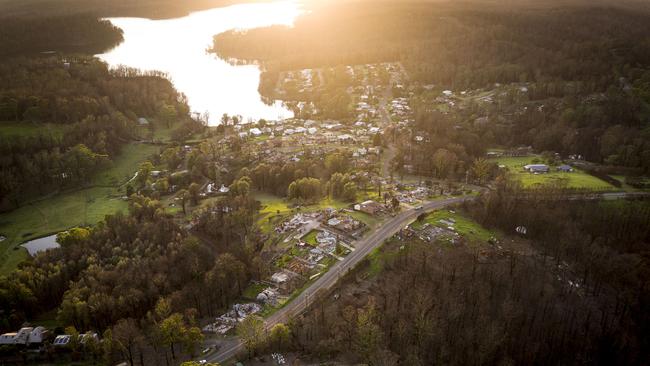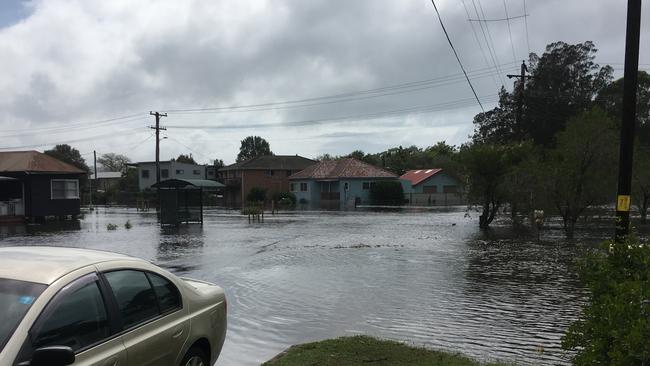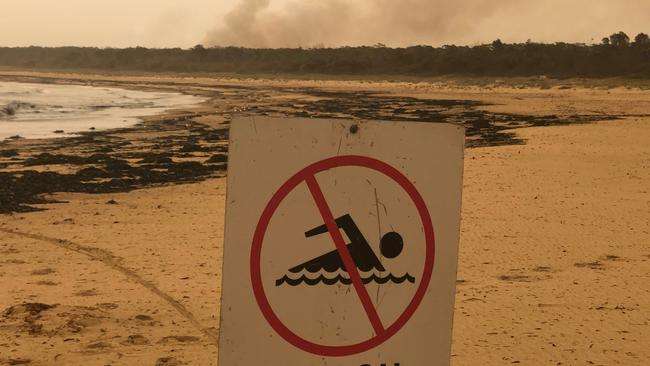NSW Bushfires: South Coast beaches need help to recover to their beautiful best
The tumultous summer of bushfires and then torrential rain has left its mark along the South Coast’s usually pristine beaches. The area’s councils now face the hard job of cleaning ash and debris from the waterways.

The South Coast News
Don't miss out on the headlines from The South Coast News. Followed categories will be added to My News.
- Welcome to the South Coast News
- Volunteer army gets to work on fire-affected land
- Webcast trials, number counting at ‘essential’ recovery centres
Three south coast councils are seeking funding from the NSW Government to improve waterways affected by bushfire debris.
Shoalhaven, Eurobodalla and Bega Valley councils have each applied for funds from the first round of the Coastal and Estuary Grants Program, which offers financial assistance for bushfire-affected coastal waterways.
High-priority waterways have been earmarked for attention, focusing on revegetation, sediment control and improving areas which are sanctuaries for bushfire-affected residents.
The fires, followed by heavy rainfall, left its mark along the South Coast’s pristine beaches and waterways.
Piles of ash washed onto beaches from drains and nearby creeks, with the high-tide leaving its mark before a surge of waves would scatter the debris on the next high tide.

While some beaches in the Eurobodalla shire, and particularly those close to river mouths, still have fire debris washed from creeks and rivers, the majority are clearing naturally.
Eurobodalla Shire Council's manager of environmental services, Deb Lenson, said while both the council and the NSW National Parks and Wildlife Service would continue to monitor the situation, it was usually best to let nature take its own course.
“It’s not environmentally or economically wise to physically clear debris from the beaches unless there is a safety risk,” Ms Lenson said.
“We have limited capacity for waste disposal and obviously the first priority is the bushfire clean-up around homes and towns.”
Beaches near Mystery Bay and the river mouths at Tuross and Moruya were still impacted.
Given the extent of this summer’s bushfires, Ms Lenson said council and state agencies were monitoring estuaries and beaches to see what the impact would be.
“We’ve never had anything like this before, so we don’t know how long it will take for the environment to fully recover,” she said.

Similar to the Eurobodalla region, the Shoalhaven’s beaches have returned to a picturesque state after heavy rainfall.
The February deluge broke river banks in the northern Shoalhaven and flooded the low-lying suburb of Lake Conjola.
The council elected to mechanically open the lake on February 10, as floodwater rose above the trigger level and it has remained open since.
In its application for funding, Shoalhaven Council’s director of planning, environment and development Phil Costello said a large proportion of the community was affected by natural disasters and a long-term opening would be beneficial for the area’s recovery process.
It has also applied for $2.35 million of the $5 million available in the first funding round of the State Government grant program.

In the Bega Valley, a major concern in February was the impact of run-off and bushfire debris on the catchment of Wonboyn Lake, south of Eden.
Bega Valley Shire Council’s director of community, environment and planning, Alice Howe, said about 90 per cent of the Wonboyn Lake catchment burnt, “significantly impacting water quality, estuarine ecology and the local oyster industry”, .
“Oysters are particularly vulnerable to fresh water and sediment inputs, so council relocated sand from the entrance channel of Wonboyn Lake to help improve tidal exchange and water quality,” Ms Howe said.
“The Department of Planning, Industry and Environment (DPIE) has installed a series of loggers in Wonboyn Lake and continues to take water samples to understand the influence on the increased tidal exchange.”
The council also applied for a portion of the Coastal and Estuary Grants Program to “install sediment and erosion controls, restore estuarine foreshores and habitat and conduct water quality monitoring to determine the impacts of fire activity.”

If successful, Eurobodalla Shire Council natural resources supervisor Heidi Thomson said funds would be used on high-priority sites.
“Our application was for just over $1.1 million to implement a three-year program of sediment and erosion control, weed control and revegetation at high priority coastal waterway sites,” Ms Thomson said.
“This project will also include additional water quality monitoring to help us gain a better understanding of the impacts and changes in the waterways.
“The applications from Shoalhaven also includes a joint regional application which will provide funds for the development of a regional recovery plan for coastal waterways across Bega, Eurobodalla and Shoalhaven council areas.”
